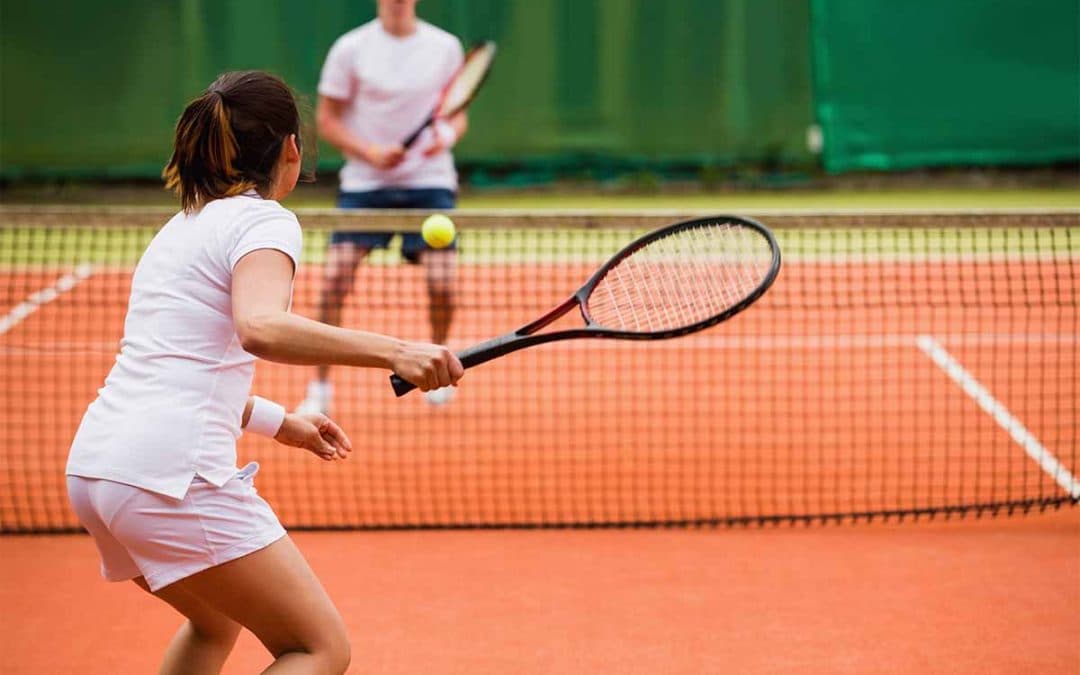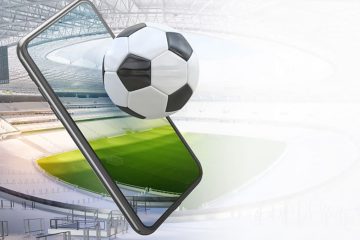Equipment
Tennis court. Tennis is played on a rectangular court with a flat surface and a marked surface. The court has a net, which runs the full width of the court, parallel to the baseline, dividing it into two equal halves. The length of the court is 23.77 m and its width is 8.23 m for singles matches or 10.97 m for doubles matches. The lines along the short sides of the court are called backstops, those along the long sides are called sidelines. Beyond the boundaries of the lines is extra space for player movement.
The court also marks the service court by means of service lines parallel to the baseline and to the net, which are placed 7 yards (6.40 m) from the net and drawn only between the singles touchlines, and a centre service line which is drawn in the centre of the court and parallel to the touchlines and between the service lines. The centre line of the service shall also be shown on the net with a vertical white strip drawn from the court to the top edge of the net. The backboard lines shall be marked with a short line indicating the centre. All lines drawn on the court are part of the court. A ball hit or barely hit on the line shall also be counted. The outer edges of the lines are therefore the boundary of the court.
- Court. There are different kinds of tennis court surfaces: grass, unpaved, hard, or synthetic carpet (artificial grass, acrylic). The standard size of a tennis net is 1,07 m x 12,8 m, with a square surface with a side length of 40 mm. Clips may be of the classical screw or metal type.
- Racket. To hit the ball, the player uses a racket, which consists of a handle and a rounded rim with strings stretched. The stringed surface is used to strike the ball. The rim of the racket was originally made of wood, in the present time – from complex composites consisting of ceramics, carbon fiber and metals. Read “How to choose a racquet”.
- Ball. A hollow rubber ball is used to play. The ball is coated on the outside with fluffy felt to give it some aerodynamic properties. Balls used in major competitions shall comply with established criteria, which include size 65.41-68.58 mm, weight 56.0-59.4 g, level of deformation, as well as colour. The yellow and white colours are approved by the United States Tennis Association and ITF. Fluorescent Yellow, also known as Optic Yellow, was introduced in 1972 as the most prominent colour on television, while other bright colours can also be found in amateur sport.

Laws of the game
The players (teams) are on opposite sides of the net. One of them is the server, who serves and puts the ball into play. The other player is the receiver. The task of the players is to direct the ball with the strokes of the racket to the opponent’s side, hitting the ball at the boundary of the court. The player must hit the ball before it touches the court more than once. It is also possible to hit the ball without waiting for it to fall to the court – play from the backhand. The player who makes a mistake loses the rally and his opponent wins the point.
Players need to score points to win games (minimum of 4 balls: 15-30-40-games, but by a difference of at least two balls). A player is given two attempts to serve. The player serves alternately to the left and right quadrants. If the ball hits the net and hits the correct square, the service is replayed. After a game, the service shall go to the opponent. After an odd number of games, the players shall be given a one minute break and change sides. The player who is the first to win 6 games (provided his opponent wins no more than 4 games) shall win the “set”.
Popular: What does the expression Imba mean?
Once the score in a set is 5-5, two consecutive games must be won to win a set. When the score is 6-6, a tie-break shall normally be played (by winning at least 7 balls but by a margin of at least two balls). To win a match you must win 2 out of 3 or 3 out of 5 sets, whereby the total possible number of sets (3 or 5) is initially decided by the rules. As soon as one of the players reaches the required number of sets won, the match is over.



0 Comments